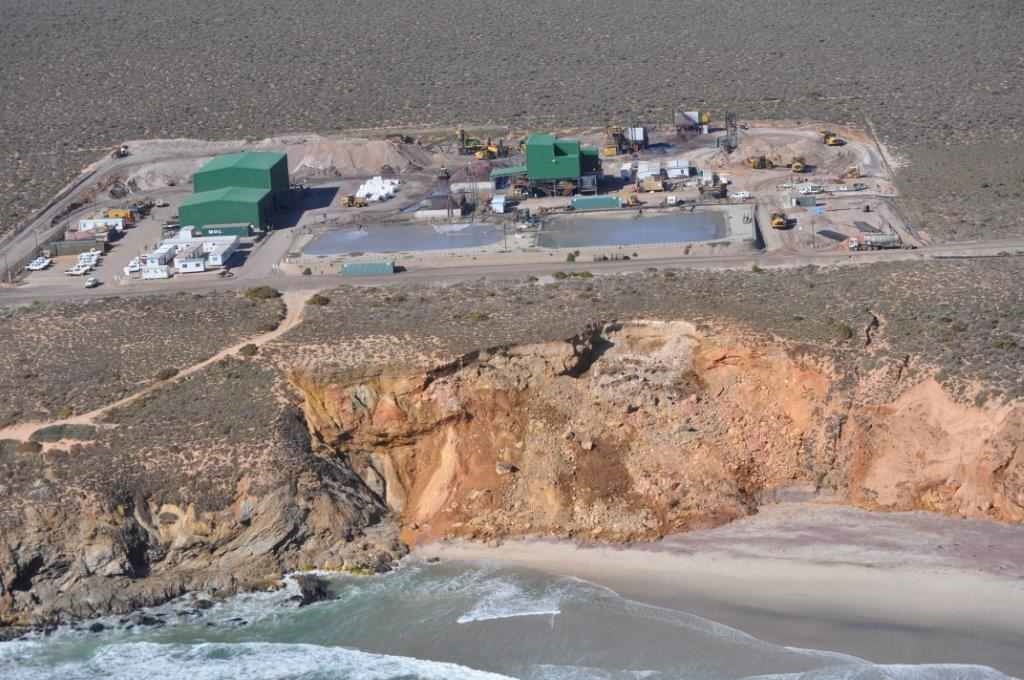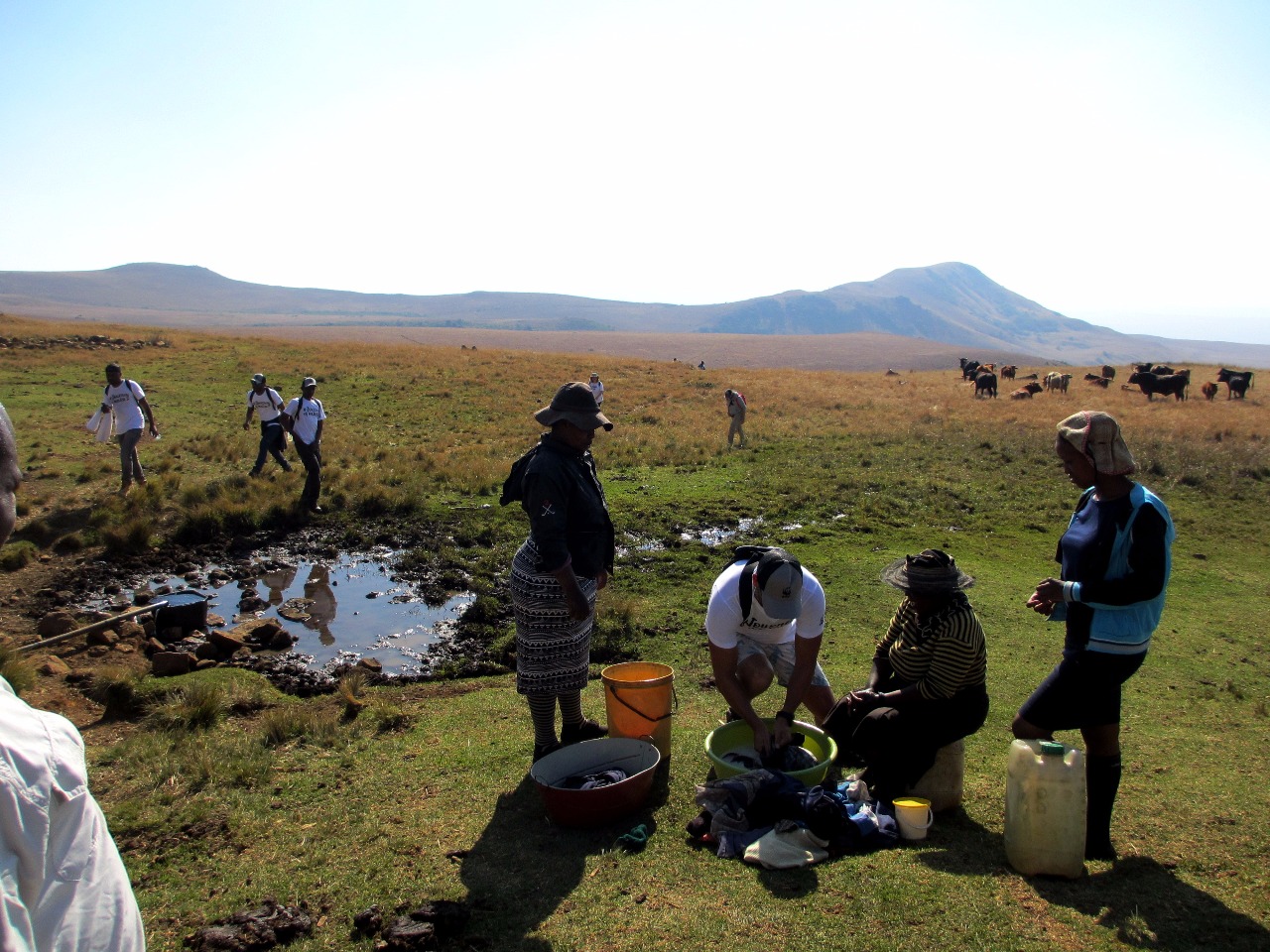2018-09-26 07:39
John Yeld

This cliff at the Tormin mine on the West Coast has collapsed. It has been alleged that the company caused the collapse. (Archive photo supplied to GroundUp)
Consultants employed by Australian company Mineral Sands Resources (MSR) have acknowledged that the massive expansion of mining for mineral sands on 10 West Coast beaches north of the Olifants River estuary will cause unavoidable environmental damage, but claim that the damage can be reduced to "acceptable" levels.
This is one of the key findings of a draft Environmental Impact Assessment (EIA), part of a new application by the controversial Australian mining company, published on September 18 for public comment, GroundUp reported.
The draft EIA has been released while MSR is still waiting for a decision on its separate application to condone earlier flouting of environmental regulations. The company had already started work on the proposed expansion before approval had been granted by the Department of Mineral Resources.
MSR, a subsidiary of Mineral Commodities Ltd, that trades on the Australian Securities Exchange as MRC, owns and operates the 120-hectare Tormin Mineral Sands Mine on the West Coast near Lutzville. The company extracts extremely rich concentrations of mineral sands such as zircon, ilmenite, rutile, magnetite and garnet from below the high-water mark.
Last year, it applied to extend mining operations to another 10 beaches north of the existing mine. This would involve mining the inter-tidal zone over 43.7ha and widening the haul road over six hectares, as well as mining a 75-hectare "strand line" (former shoreline) area inland of Tormin's existing processing plant.
Tormin also wanted approval for an additional 64-hectare infrastructure and plant expansion area.
On November 22, the department refused environmental authorisation, saying it was not satisfied with the way the impact assessment process had been conducted or with the company's compliance with legal requirements.
A site inspection by the department's staff had revealed that Tormin had contravened the National Environmental Management Act (NEMA) by unlawfully starting work on listed activities.
In other words, it was already doing some of the things for which it was applying for authorisation. The department also said that the mining company and its consultant – Rondebosch-based consulting company SRK – had not disclosed these NEMA contraventions to the department, to other state organs or to the public.
Tormin then submitted a Section 24G application in terms of NEMA regulations for "rectification of unlawful commencement of the listed activities" – in essence, for legalising an unlawful act – and restarted the environmental impact assessment process for the mine's expansion.
This will involve mining sand between the low-water mark and the "toe" of the coastal dunes and/or cliffs (with a 10-metre buffer zone) to an average depth of six metres. Strip mining of the inland strand line will be undertaken progressively using excavators to extract the mineralised sand layer up to a maximum depth of 30 metres, with an average of 10 metres.
Although the department has not yet ruled on the 24G application, a new draft EIA was released last week with a 30-day comment period.
The consultants note that most of the area under application falls within a Critical Biodiversity Area, designated to promote coastal resource protection and to maintain ecological processes
However, they say, specialist studies did not identify any specific areas that should be designated as "exclusion zones". These studies have shown that the extension project is "generally acceptable", they say.
"The Tormin Mine extension project will result in unavoidable adverse environmental impacts. None of these adverse impacts are considered unacceptably significant and all can be managed to tolerable levels through the effective implementation of the recommended mitigation measures. In addition, the project will directly and indirectly benefit the local and regional economy."
They conclude that on purely environmental grounds - "the project's potential socio-economic and biophysical implications" - the application should be approved, provided the proposed mitigation measures were taken.
Concerns raised by interested and affected parties during the initial phase of the EIA included:
authorisation should not be granted as MSR was not compliant with its existing authorisations and approvals at Tormin;
insufficient information had been provided about the proposed beach access roads and beach mining areas;
the removal of sand might result in beach, cliff and dune erosion, and setback lines should be stipulated;
the extension of the mine would restrict public access to the coast, affecting the tourism value of this stretch of coastline; and
rehabilitation would be "very difficult".
The executive summary of the draft EIA can be downloaded from the SRK website, and hard copies are available at the Lutzville public library, Vredendal library and SRK's Rondebosch offices.
A Public Open Day is being held at the Lutzville Hotel on Wednesday, October 3, between 15:00 and 18:00.
Facts about the Tormin mine
As at February 1, 2017, when Tormin Mine was operating at full production, MSR employed 216 people, of whom 170 were from the local area, with about 88% of local employees categorised as Historically Disadvantaged South Africans (HDSA).
Approximately 80 additional employment opportunities will be created by the proposed mine extension, predominantly at the Mineral Separation Plant.
Up to 300 jobs will be created in the construction phase.
Residents closest to the mine comprise farmers and farmworkers, with the nearest formal communities located more than 13km to the east of the mine, along the Olifants River.
The three main settlements of Vredendal, Lutzville and Koekenaap are described in more detail below due to their size and regional importance, as well as the large number of Tormin employees that reside in these towns.
Lutzville is located approximately 25km east of the Tormin Mine. The closest town to the mine is Koekenaap, about 19km to the east.
The small town of Lutzville experienced rapid population growth between 1991 and 2001, with the increase in mining activities in the area, but the annual growth rate reduced to around 1.43% per year in 2011.
The Lutzville population was estimated at 8 000 in 2014 (based on the Matzikama Municipality Spatial Development Framework of 2014).
The town's population is employed mainly in the mining and agricultural sectors, the latter entailing largely viniculture and tomatoes.
The rural population in Lutzville is declining, indicative of increasing urbanisation within the area (Matzikama Municipality IDP, 2014).
https://www.news24.com/Green/News/damag ... s-20180925







